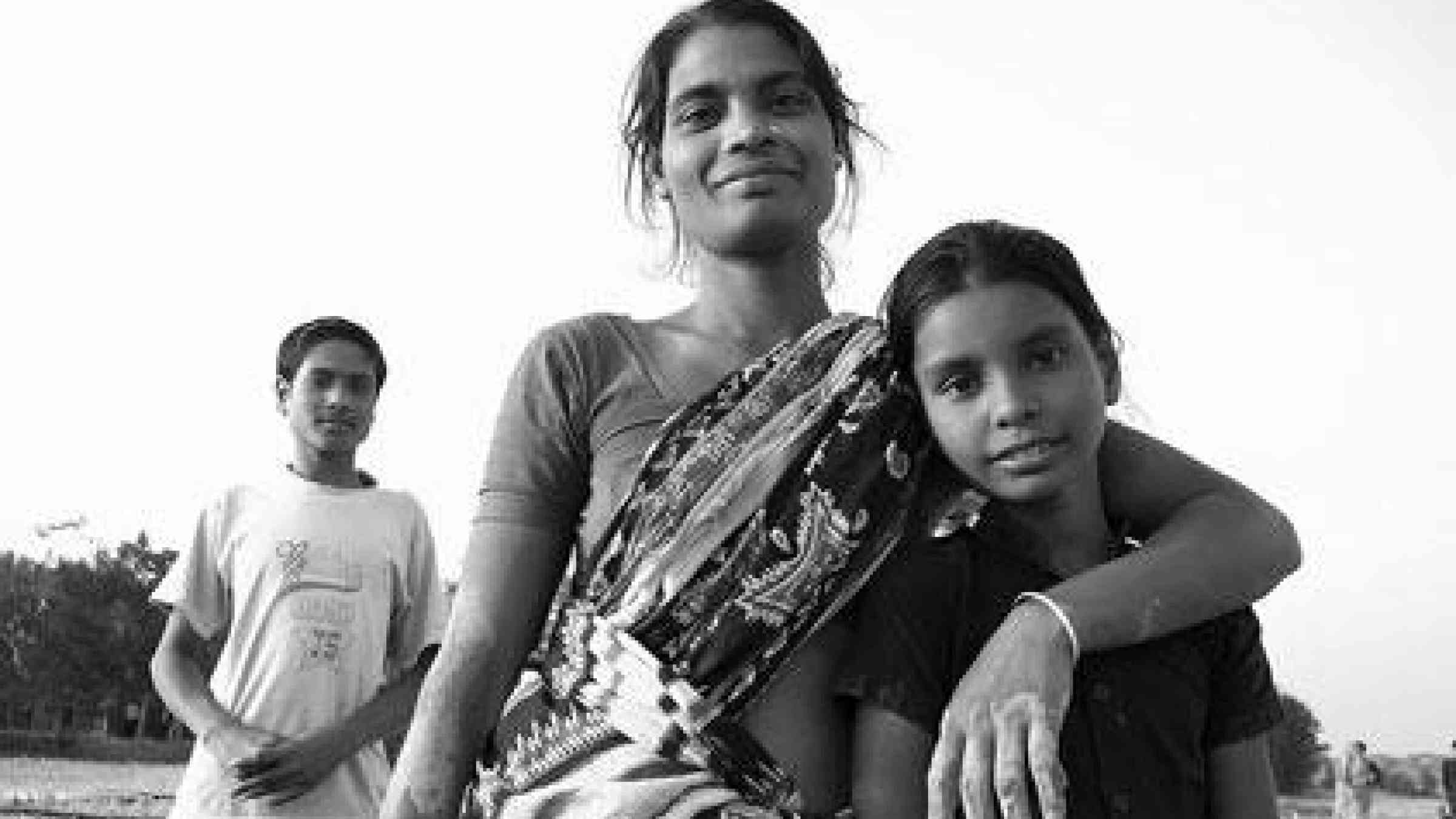IDDR 2012 - Putting women and girls on the map

GENEVA, 5 October 2012 - On 13 October, the International Day for Disaster Reduction (IDDR) will be an occasion to pay tribute to millions of girls and women around the world who are on the frontline making their communities and societies resilient to the impacts of disasters and the effects of climate change.
Driven by the theme Women and Girls: the [in]Visible Force of Resilience, IDDR 2012 draws attention to the fact that their efforts to protect and rebuild their communities before, and after, disasters are often unrecognized.
According to the World Conservation Union (IUCN), women, boys and girls are 14 times more likely than men to die during a disaster. In Myanmar, Cyclone Nargis in 2008 resulted in twice as many deaths among women as men.
The UN Secretary-General's Special Representative for Disaster Risk Reduction, Margareta Wahlström, believes that even though women and girls feature disproportionately among disaster casualties they are not passive victims but people whose contributions to building community resilience to disasters are often unrecognized.
"International Day 2012 is about moving away from portrayals of women and girls as victims. It's about showing the world that they are really among the most active when it comes to creating resilience and protecting their communities", states Wahlström.
An innovative and interactive crowd mapping exercise -- Women and Girls on the Map -- will be a major feature of the day, and the week ahead, as it seeks to illustrate the extent of women's involvement around the world in disaster risk reduction and disaster management.
Women and Girls on the Map has been created by the Gender and Disaster Network, the Huairou Commission, Northumbria University (UK), OXFAM, and Plan International, with support from UNISDR. The interactive process allows visitors to the IDDR 2012 website to submit reports and news stories that are then highlighted on a map that shows the spread of activities by women and girls around the world. Each highlight is a popup that links directly to the featured item.
The day will also focus on the issue of gender equality as debate and consultations continue on the achievements of countries implementing the world's first international agreement on disaster risk reduction, the Hyogo Framework for Action (2005-2015): Building the Resilience of Nations and Communities with a view to a successor agreement in 2015.
The lives of over 200 million people are disrupted annually by disasters. The majority are women and girls. Economic losses which affect women and girls disproportionately are also on the rise. A new record for economic losses was set last year of $380 billion.
UNISDR's 2011 Global Assessment Report -- Revealing Risk, Redefining Development categorically states that exposure to disaster risk is growing faster than the world's ability to build resilience. Economic losses are rising, and communities are threatened.
Ms. Wahlstrom said: "It is a plain and simple truth that disasters reinforce, perpetuate and increase gender inequality, making bad situations worse for women. This is often not well understood. At the last World Conference on Disaster Reduction in 2005 only 19 out of 118 countries mentioned gender or women's issues in their national reports.
"By 2011, when 133 countries reported on their implementation of the Hyogo Framework for Action, the majority acknowledged that gender was important but little progress is being made on mainstreaming it into policies and programmes.
"Alongside this gender blind spot, we see that in most countries where girls take their full place in the education system they are high achievers and go on to develop outstanding careers in many fields.
"This positive image of women and girls as high achievers is what we want to promote to encourage more of them to become involved in disaster management at community and national level where their expertise and insights are badly needed. As we prepare to mark International Day for Disaster Reduction, we can see there is no shortage of positive role models for women and girls who prove that they can make an outstanding contribution to reducing risk from disasters and building the resilience of their communities."
--
The UN General Assembly designated 13 October as the date to celebrate IDDR (resolution 64/200, 21 December 2009). This year it will be observed by UNISDR on Friday 12 October.